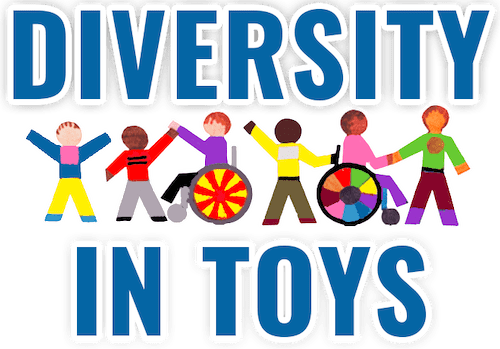Empowering Your Child with ADHD: Tools for School Success

Caring for a child with Attention Deficit Hyperactivity Disorder (ADHD) can be challenging and rewarding at the same time. One of the key areas where children with ADHD may require extra support is in their academic endeavors. However, with the right tools and strategies, caregivers can help their child thrive academically, socially, and emotionally. Below are a few of our favorite tools for helping a child with ADHD succeed in school.
- Open Communication and Understanding
Our absolute favorite tool for helping a child with ADHD succeed in school is simply being there for them. This may sound corny, but don’t underappreciate how important it is! The foundation of any successful effort to help your child with ADHD excel in school is open and empathetic communication. Understand that ADHD is a neurodevelopmental condition, not a result of laziness or lack of effort. Talk to your child about their challenges and strengths, and create a supportive, judgment-free environment for them to express their feelings and concerns.

- Routines and Consistency
Children with ADHD benefit from structured routines and consistent schedules. Set clear daily routines for waking up, getting ready for school, completing homework, and going to bed. Teach your child to break down assignments and projects into smaller, manageable parts. Visual schedules or checklists are particularly helpful.
Crucial to keeping routines is time management, a skill that children with ADHD often struggle with. Help your child by teaching them techniques like setting alarms, using timers for focused work sessions, and breaking tasks into small time intervals with breaks in between. Encourage them to prioritize tasks and assignments based on importance and deadlines. These skills will help them thrive when they are out of the house and on their own.
- Organizational Tools
In line with establishing a routine are organization tools like planners, calendars, and color-coded binders or folders. Teaching your child to use these tools can help them keep track of assignments, due dates, and important events. Checklists can help break down tasks into manageable steps.
Reward systems can also be highly effective for children with ADHD. Part of their organizational toolkit can be a system of rewards that encourages beneficial behavior and disincentivizes noncompliance. Create a reward chart tailored to your child’s needs and interests. Emphasize small, immediate rewards for completing tasks. Then, encourage your child to take the helm when they have practiced this for a while.

- A Productive Study Environment
Children with ADHD are susceptible to environmental stressors or distractions. Since ADHD commonly co-occurs with sensory processing disorder, too much environmental stimulation can be overwhelming. Help your child succeed in school by creating an afterschool homework environment that minimizes distractions. A quiet, clutter-free space with good lighting can improve focus. Limit access to electronic devices during homework time. Consider buying your child stimuli dampening aids like noise-canceling headphones.
- Assistive Tech
I know — parents, guardians, and teachers are concerned with how much screen time their children, especially younger students, are getting. But, a lot of technology tools can actually enhance learning and organization. If you can isolate these technology solutions from the distractions offered by the internet at large, doing so may ultimately help your kid stay organized and prepared for their school year.
Educational apps, speech-to-text software, and digital organization tools like Google Keep (for notetaking and list making), myHomework (assignment tracker) or MyStudyLife (online calendar app) can help your child manage assignments and study materials more efficiently. Consider your child’s particular struggles and needs. Then, explore online or app tools that may help them develop procedures to overcome these struggles.
- Supportive Services
While parents and guardians can sometimes feel like it’s them against the world regarding their child’s wellbeing, teachers and school administrators really are there for you and your child. If your child has particular struggles in school, don’t be afraid to advocate for them directly to their school or teachers. Build a positive and collaborative relationship with your child’s teachers and school staff. Inform them about your child’s ADHD and work together to develop strategies that support their learning. Explore the possibilities of special education services or an Individualized Education Program (IEP) that may be offered through your child’s school. These services can provide tailored support and accommodations to help children with ADHD succeed in school.
Keep in mind that finding the right system for your child may be a process. Not all IEPs are the same! If you think your child is receiving too much or too little support, revisit the matter with their teachers and school staff.

- Regular Exercise and Healthy Diet
Sitting at school all day is not just something that kids with ADHD struggle with — children of all types have a hard time with it. However, children with ADHD may be particularly prone to meltdowns or executive functioning issues when they don’t have an outlet for their excess energy. Physical activity and a well-balanced diet can have a positive impact on ADHD symptoms. Encourage your child to engage in regular physical activities to help manage restlessness and improve focus. Additionally, nutritious meals and snacks help maintain stable blood sugar levels, which can aid in concentration.
- Sleep Hygiene
Sleep is essential for cognitive functioning and emotional regulation no matter who you are. But, for children with ADHD, adequate sleep is crucial. Ensure your child maintains a consistent sleep schedule so that they are operating on full strength during the day. Help them create a bedtime routine that lets them wind down and relax leading up to bedtime. That way, they can hit the hay and sleep sound through the night.

Helping your child with ADHD succeed in school involves understanding, structure, and the right tools and strategies. It may take a little bit of experimentation because every child is unique, and what works for one may not work for another. Be patient as you discover what best supports your child’s academic success. Most importantly, keep the lines of communication open and maintain a positive and supportive environment to empower your child to thrive in the classroom. Your guidance and unwavering support can make a significant difference in their educational journey.
